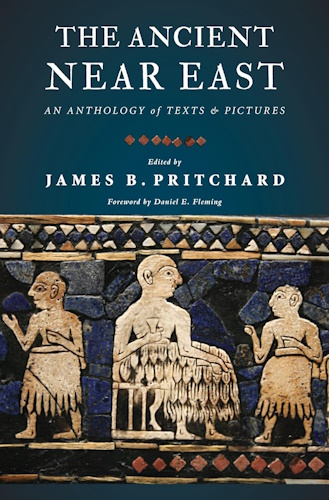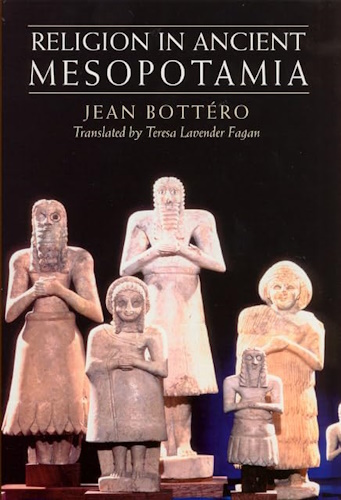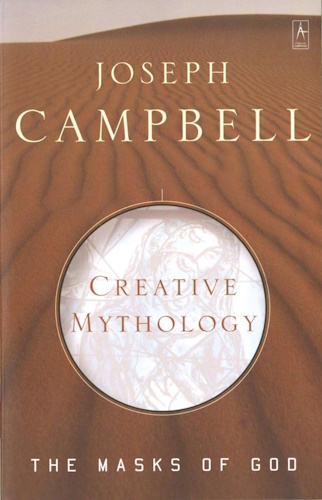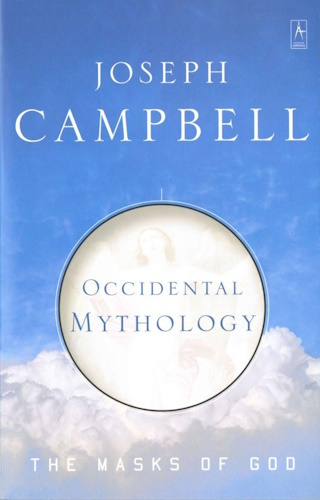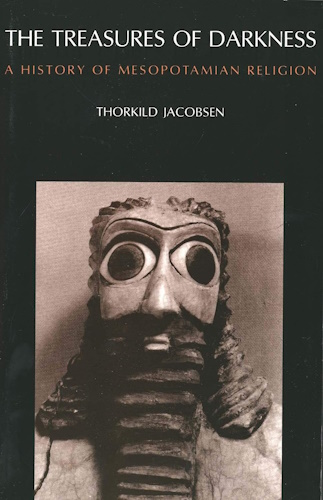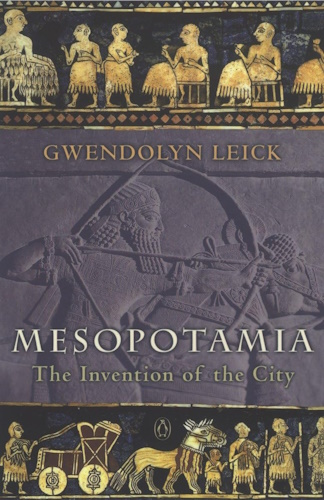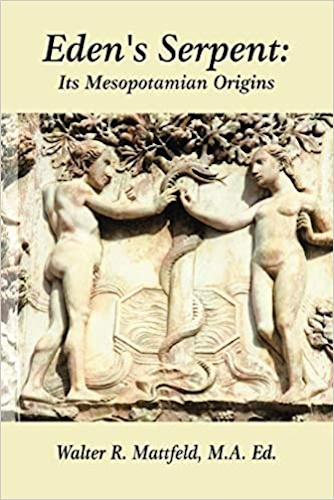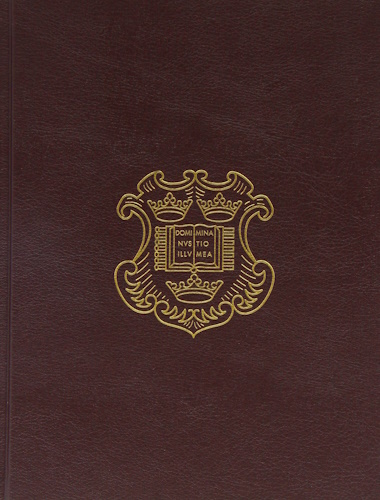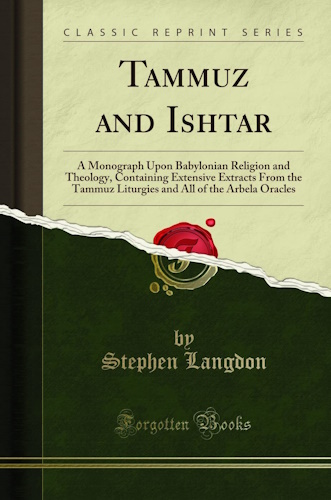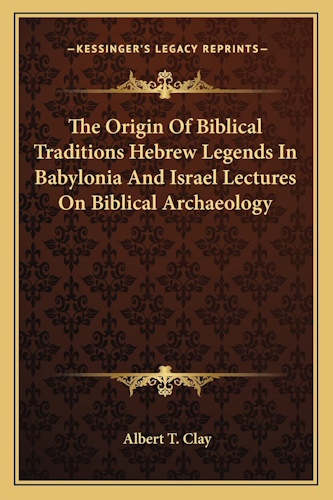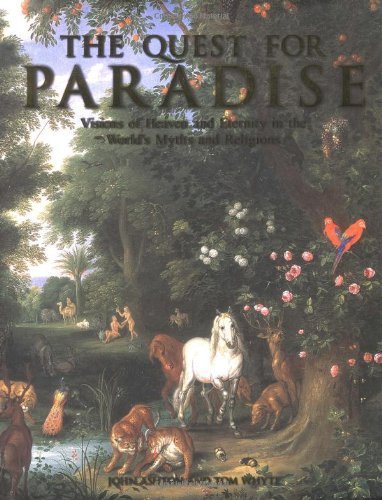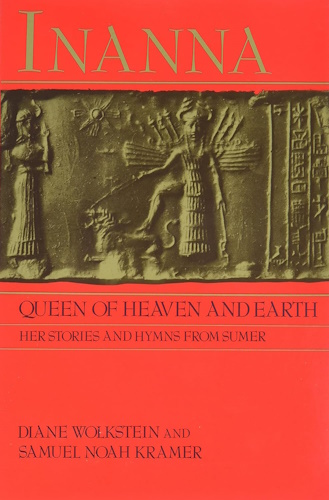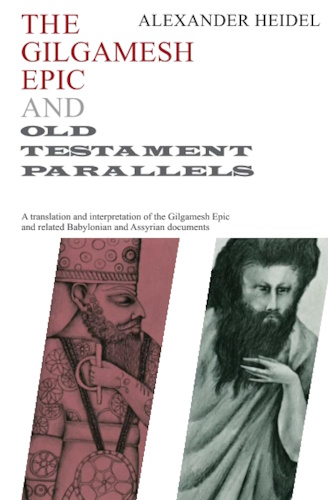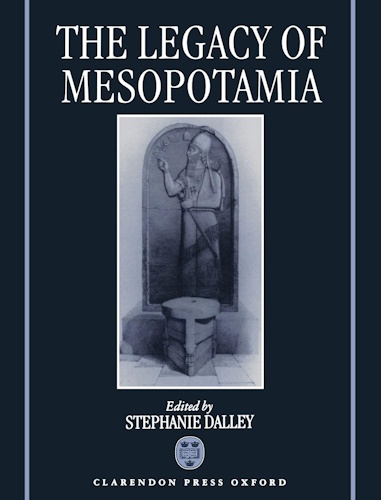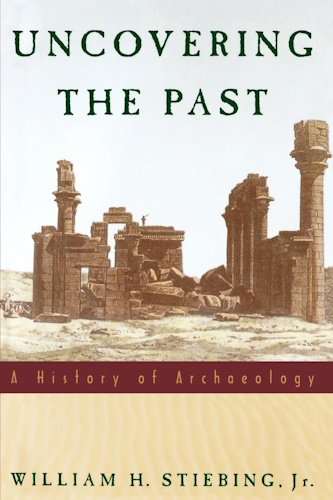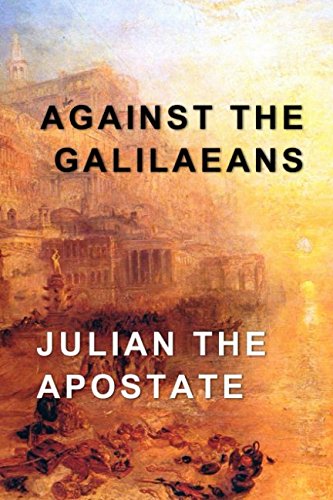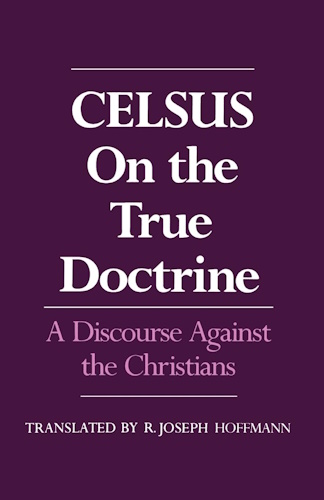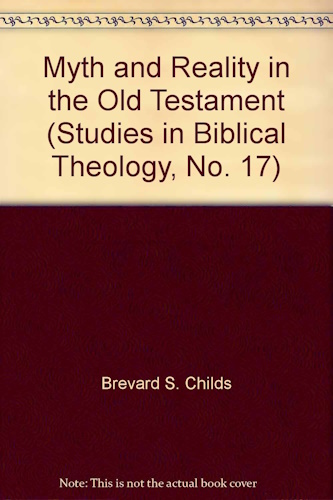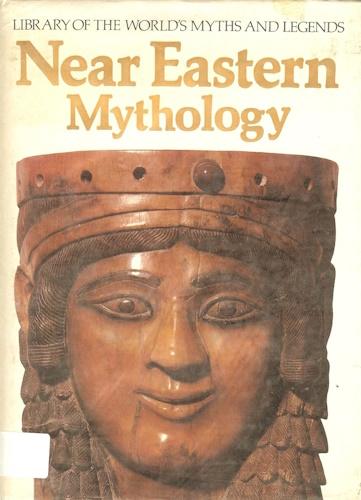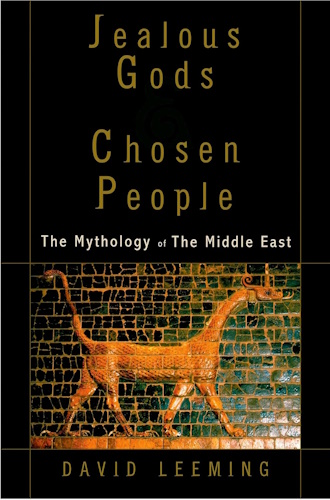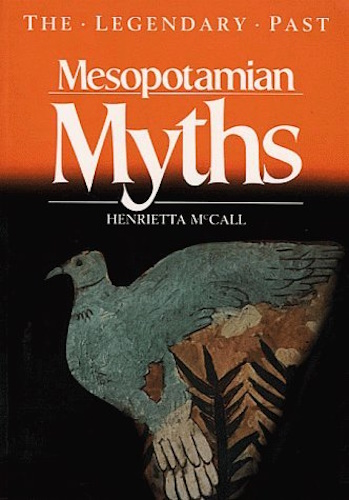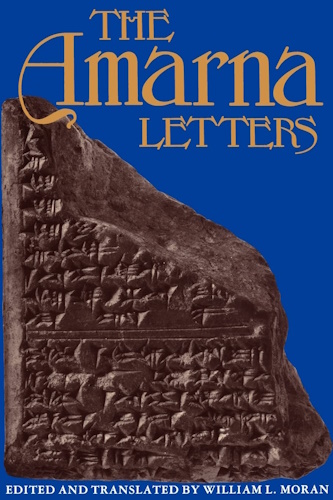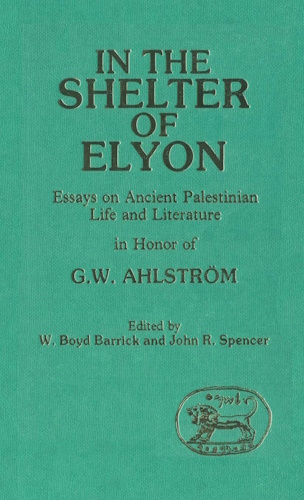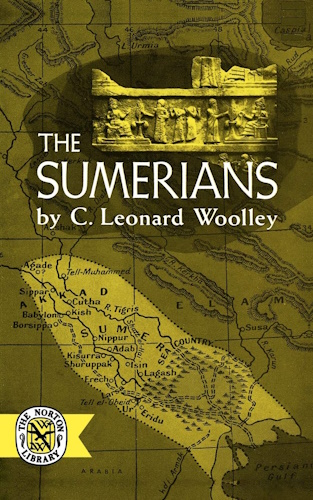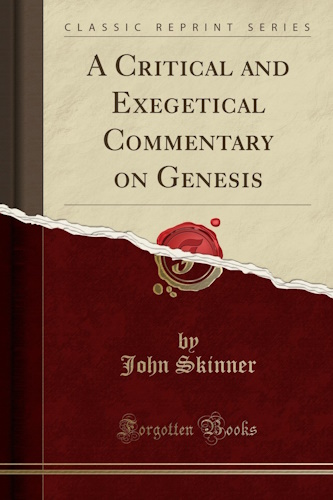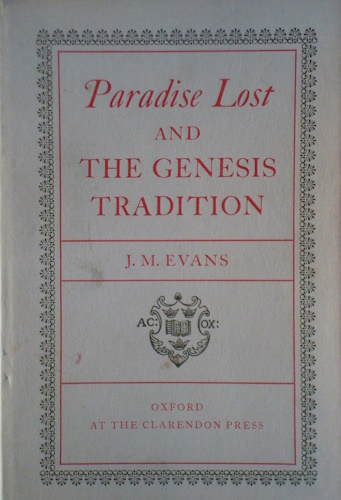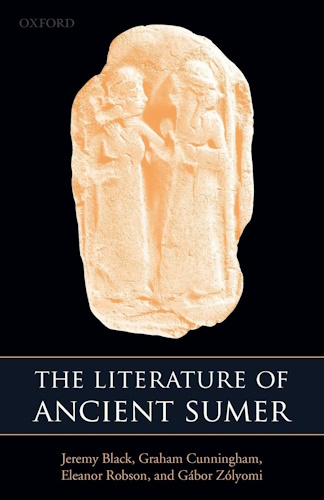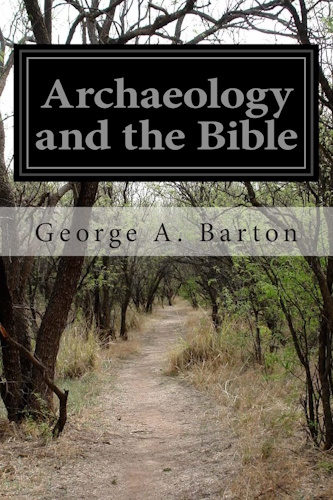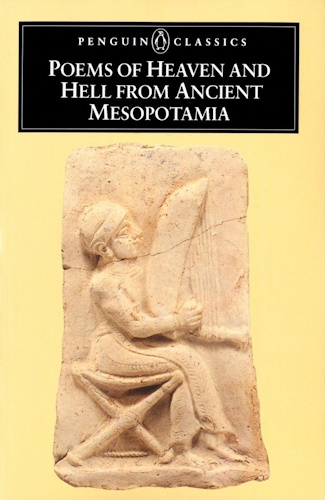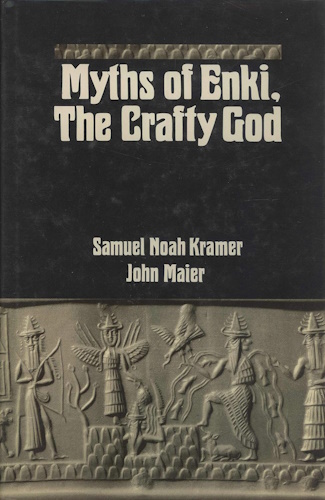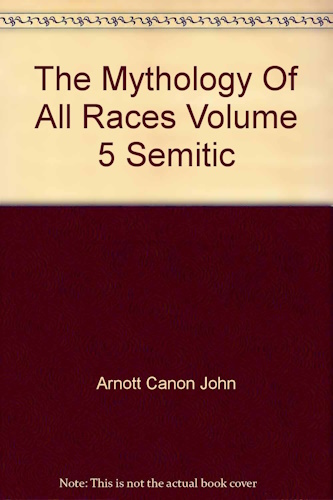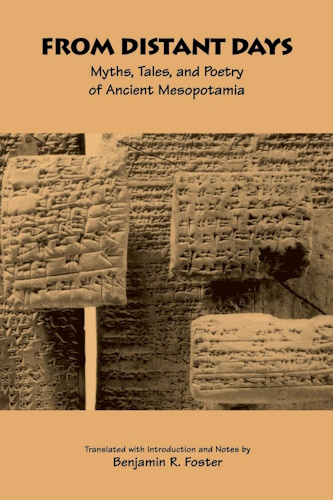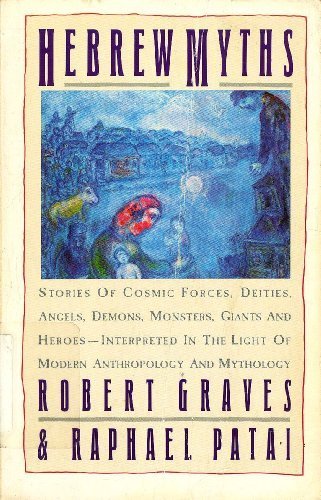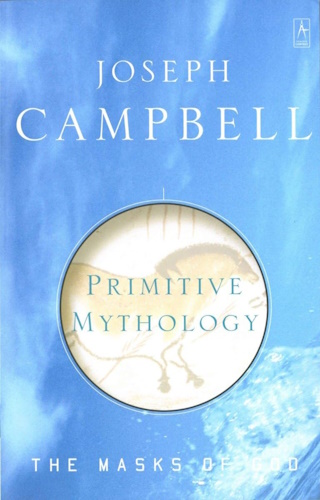![]()
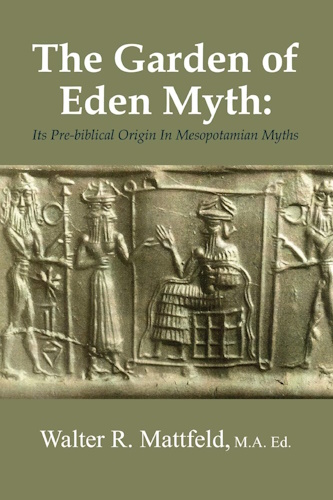
Bible Origins
The Primary History,
Genesis-2Kings:
An Exilic Composition
of March-August 560 B.C.?
by
Walter Reinhold Warttig Mattfeld y d la Torre, M.A. Ed.
e-mail contact
01 December 2001
Revisions through: 15 January 2005
![]()
The Problem:
Scholars are in disagreement about when the Primary History (Genesis- 2 Kings) was composed. Some argue that it is a series of accretions from Solomonic to Post-Exilic times (10th - 5th centuries B.C.), others have argued for a Hasmonean creation of the 2nd century B.C. This brief article focuses in on Deuteronomy 30:1-10 as a "key" to unlocking the mystery of when this National History was composed.
Deuteronomy 30:1-10 portrays Moses on the plains of Moab, east of Jericho, giving instructions to the Israelites. He predicts the future of the nation and what is to befall them. He tells Israel that they will despise God after enjoying his bounty and turn from him and worship other gods. He foretells of disaster befalling the nation, God will send his peoples into Exile, where they will serve gods of stone and wood.
What is most remarkable though is that Moses also predicts that God will have mercy on his people, and restore them to their land, after their repentance. He will also prosper them exceedingly- their prosperity will exceed that of the fathers! Israel's enemies will be subdued, and God will pour forth his spirit upon his restored people, allowing them to keep his law forevermore.
Some scholars have argued that perhaps Ezra fashioned the Primary History; he having read it to the nation in Jerusalem ca. 458 B.C. The restoration having occurred in 538 B.C. means that a period of roughly 80 years had elapsed before the nation had a Primary History.
The problem in having the Primary History as a Post-Exilic creation is Deuteronomy 30:1-10.
Why would Ezra, or any other Post-Exilic writer, have Moses predict "repentance in Exile" as a pre-condition of restoration when it didn't happen according to scenarios preserved in the books of Ezra and Nehemiah?
These books tell of a restored nation violating the Sabbath as late as ca. 444 B.C. (Nehemiah' days) and marrying foreign women. Obviously the nation has not received God's holy spirit allowing them to walk in God's law. Nehemiah speaks of the fear the restored nation has of its enemies, the Samaritans and Ammonites, as they rebuild Jerusalem's walls. This contradicts Moses' statement that the restored nation will subdue its enemies and have no fear of them upon restoration. Times are so desperate under Nehemiah with famine stalking the land that the poor are selling their lands and children into slavery to get by. This contradicts Moses' statement that upon the restoration that God will prosper his people beyond the prosperity enjoyed by the Pre-Exilic fathers.
The conditions of the restoration revealed in the books of Ezra and Nehemiah suggest to me that it is very unlikely that a Post-Exilic author created the Primary History (Genesis-2 Kings) for surely he would not make a liar of Moses in Deuteronomy 30:1-10.
It makes more sense to me that the author of Deuteronomy 30:1-10 is writing in an Exilic world. He "hopes" that God will restore his people upon their "national repentance" he is not aware that his people will be restored, and continue to despise God by violating the Sabbath and marrying foreign women. Nor is he aware that there will be no prosperity upon the return but only famine, debt, and fear of the traditional national enemies.
If we allow that endings may indicate dates for historical compositions, the Primary History being a national history, then 2 Kings 25:27 mention of the Babylonian king Evil-Merodach, gives us a date for the creation of the national history. Evil-Merodach reigned from 562-560 B.C. The author is apparently unaware of any other Babylonian kings succeeding Evil-Merodach.
Meyers and Rogerson understand that Deuteronomy was written in the Exile:
"In their present form both Deuteronomy and Deuteronomistic history presuppose the fall of Jerusalem and the Exile. Deuteronomy is presented as a speech by Moses to the Israelites on the eve of entering the land of Canaan; but it is clear from passages such as Deuter. 30:1-4 that the Exile has occurred:
"When these things have happened to you...if you call them to mind amomg all the nations where the Lord your God has driven you, and return to the Lord your God...then the Lord your God will restore your fortunes...and gather you again from all the peoples among whom the Lord your God has scattered you...and the Lord your God will bring you into the land that your ancestors possessed, and you will possess it."
(p. 91. Eric M. Meyers and John W. Rogerson. "World of the Ancestors." Howard Clark Kee, et al.
The Cambridge Companion to the Bible. Cambridge University Press. 1997, 1998, 1999)
Some scholars understand that the Primary History, Genesis-Kings is a composition by several authors, the JEDP theory, J (the Yahwist) being the "oldest" strand of the time of Solomon. Van Seters however, has argued that the Yahwist is an Exilic author:
"The Yahwist's history, which includes the primeval history, the patriarchs, and the life of Moses, was the work of an ancient Israelite ( or more specifically, Judaean) scholar living among the exiles in Babylon."
(p. 468. "Conclusion." John Van Seters. The Life of Moses, the Yahwist as Historian in Exodus-Numbers. Louisville, Kentucky. Westminster/John Knox Press. 1994. Van Seters is James A. Gray Professor of Biblical Literature and Chairman, Department of Religious Studies, University of North Carolina. He has also authored Prologue to History: The Yahwist as Historian in Genesis)
If the Primary History is a creation of 562-560 B.C. then its contents have to refer to events before 560 B.C. at the latest (unless one wants to posit later redactions).
In Genesis Noah is portrayed as cursing Canaan and making him a slave of Shem and Japheth. Most scholars understand Shem to be the Hebrews as Canaan was to be the Promised Land of Abraham's heirs. But who is Japheth who will also bear rule over Canaan with Shem?
I suspect that Japheth is the Medes. Jeremiah had predicted ca. 587 B.C. that God would restore his people after 70 years of Exile, by having the Medes destroy Babylon. Jeremiah's prophecy was a failed one though, as in 550 B.C. the Medes as a great empire ceased to exist having been defeated and absorbed by the Persians under Cyrus. Babylon was not destroyed by Medes, it surrendered peacefully to Cyrus and was spared. Cyrus did allow the Jews to return to Judah in 538 B.C. so their "Exile" was only 49 years, not 70 years.
The author of the Primary History, if writing this National History ca. 562-560 B.C. would have no knowledge of the Persians as a great world power who would free his peoples and restore them to their lands. It follows then, that Japheth is not the Persians, who rose to power between 550-539 B.C. (Persia not being listed in Genesis' Table of Nations).
Because Jeremiah in 587 B.C. (some 25 years before the Primary History was written ca. 562 B.C.) had predicted that God would use the Medes to liberate his people -they were the only powerful-enough nation capable of taking on Babylon in Jeremiah's days- after the demise of Assyria in 612 B.C. I suspect that the author of the Primary History, aware of Jeremiah's prophecy, drew the conclusion that after the Medes had destroyed Babylon, that Canaan would be co-ruled by Israel/Judah with the Medes as overlords, the Medes taking over the Babylonian empire which included Syria, Phoenicia, and Canaan. Thus he had Noah bless the Medes as a Japhethic peoples. As God's instrument in securing his people's release from the Babylonian bondage, it apparently made sense to him that they would "allow" Israel/ Judah to co-rule over Canaan.
But how does one explain Medes being identified as a Japhethic peoples ca. 562-560 B.C.?
Where is the Exilic narrator of the Primary History getting the idea that the Medes are a Japhethic peoples?
I note that in the 7th century B.C. the Assyrian records of Asshurbanipal mention Gugu of Luddu (Gyges of Lydia) sending bound captive Gimirai (biblical Gomer) warriors to Asshurbanipal as a present and requesting Assyrian help in forming a coalition against these peoples. Asshurpanipal speaks of Gyges taking on the Assyrian "Yoke," meaning he will be a tributary vassal of Assyria in order to obtain help. Asshurbanipal also remarked that this was the first time ever that Lydia came to be known to the Assyrians, saying that his fore-fathers had never heard of the place (this statement suggests that Genesis' Lud in the Table of Nations, if Lydia, dates the text as not earlier than the 7th century B.C.).
Bury on Lydia and Assyria, citing Asshurbanipal's (669-633 B.C.) own words preserved in cuneiform:
"Gyges, king of Lydia, a district which is across the sea, a remote place of which the kings my fathers had not heard speak of its name. The account of my grand kingdom in a dream was related to him by Assur, the god my creator: "Of Assurbanipal, king of Assyria, the beloved of Assur, king of the gods, lord of all, his princely yoke take."
(cf. p. 840, notes to p. 104, citing a cuneiform translation by G. Smith. History of Asshurbanipal. p. 64, 73, in J.B. Bury. A History of Greece to the Death of Alexander the Great, New York. The Modern Library. Random House. 1937)
Later, Gyges changes his mind and refuses to be a vassal. He arranges for Greek warriors to go to Egypt as mercenaries to help the Saitic Pharaohs rebel against Assyria. Greek mercenaries flock to Egypt from Ionia and Caria in the course of the 7th century B.C. enlisting in the Egyptian army. By the mid-7th century B.C., ca. 640 B.C., Assyria has pulled out of her western empire in Canaan and Phoenicia, and the Egyptians, using Greek mercenaries, fill the political vacuum. Archaeologists have found what they believe to be Greek mercenary settlements within Canaan in the 7th/6th centuries B.C.
Cook makes the following observation about Greek myths making the Medes and Persians Greek descendants:
"It is curious that Medea and Perseus were figures of Greek legends who had oriental connections. But granted that they were, it was natural that when word of the Mada and Parsa reached them, the Greeks should tie them into their own mythology, making Medea travel to Media and claiming Perseus as the progenitor of the Persians..."
(p.1, J.M. Cook, The Persian Empire, Barnes and Noble, New York, 1983, 1993)
Ray noted that Ionians and Carians were probably in Egypt, serving Pharaoh Psammetichus I (664-610 BCE) in the 7th century B.C.:
"Carians, together with their Ionian cousins, soon migrated to the banks of the Nile. Herodotus (2.152) dates their arrival to the early years of Psammetichus I, whose reign began about 664...This early date for the Carian's arrival is confirmed by the account of the military historian Polyaenus (2nd century B.C.E.) and archaeolgy suggests that it was in this period that the settlement of Naukratis was first established as an emporium for traders from the Aegean...In 593, Psammetichus II, grandson of the founder of the dynasty, undertook a major campaign into Nubia. This was a time-honored pharaonic custom, but on this occasion the Egyptian army included contingents of Ionians, Phoenicians, and Carians. On their return toward Egypt, they camped at the foot of the colossal statues of the temple of Abu Simbel...One of the Ionians left an inscription below the knee of the broken colossus south of the doorway; this is probably the earliest historical inscription in the Greek language anywhere. Carian inscriptions were also carved on the legs of this colossus."
(Vol. 2, pp.1189-1190, John D. Ray, "Soldiers to Pharaoh: The Carians of Southwest Anatolia." Jack M. Sasson. Editor. Civilizations of the Ancient Near East. Peabody, Massachusetts. Hendrikson Publishers. [1995 Charles Scribner & Sons] reprint 2000 rebound into 2 vols)
Jeremiah (2:16) appears to allude to the defeat of Jewish warriors by the Greek mercenaries stationed in Tahpanhes and Memphis (biblical Noph). So, not only are the Greek mercenaries "afflicting" the Jews (Eber?) but also the Assyrians (Asshur?) taking over the Assyrian empire in the west. Perhaps these 7th century B.C. events are what lies behind Balaam's Kittim oracle where Kittim ships afflict Asshur and Eber (Nu 24:24)?
At Tell Arad in the Negev, ostraca dated to the 7th century B.C. mention the Kittim with Greek names being allowed to draw rations from the Judaean fortress. Scholars are divided as to whether these Kittim are in the employ of Josiah as mercenaries or troops stationed by Necho to collect tribute and control the recently conquered Judah. In either event I suspect that it was via these Ionian mercenaries that the Jews came to understand that the Medes were a Japhethic nation.
The Athenians had a myth that Medus, son of Medea of Colchis (former wife of Jason of the Argonauts), had a son by Aegeus, king of Athens, that she fled to Asia and her son became the founder of the Medes. The Ionians in myths, claim to have come from Attica and settled the southwestern coast of Asia Minor (Anatolia or modern Turkey). Perhaps the Ionian mercenaries then, via their contacts with the mother country, Greece, introduced to the Jews the notion that the Medes were the descendants of a Greek king of Athens? In Greek myths, the Titan Iapetos, was considered to be the ancestor of all Greeks. He was the grandfather of the Greek "Noah," Deucalion. The Jews evidently "garbled" the Greek myth making Iapetos/Japheth the son of "Noah," rather than his grandfather, perhaps because the Greeks considered themselves Iapetiade along with the Medes. The Greek's knowledge about the Medes, would then, have come about via the Ionian mercenaries serving in Palestine between 640-604 B.C. under the Egyptians who "took over" the former Assyrian holdings, they, -the Assyrians that is- having their hands full fighting revolts amongst Medes, Chaldeans, and Elamites.
If my hunch is correct, then the Athenian Medus myth is of the 7th century B.C., and was known by the Jews BEFORE they went into Exile ca. 587 B.C. and "surfaced" in the Primary History of 562-560 B.C.
The prophecy about Canaan being co-ruled by Japheth and Shem, would then be, in a sense, an unfulfilled prophecy, as the Japhethic Medes were defeated in 550 B.C. by the Persians. There is an ironic twist here though- the Persians in Greek myths are also portrayed as Japhethic peoples, being the descendants of the Greek hero Perseus who gives his name to the Persians. Cyrus, the founder of the Medo-Persian empire, was according to traditions preserved by Herodotus, the grandson of the last king of Media, Astyages. This would mean that Cyrus and all the kings of Persia who claimed descent from him, were of Japhethic lineage, in that the Athenian Greek myths make Medus the founder of the Medes.
The failure of the Primary History to ever again mention an event which saw Noah's prophecy fulfilled, that is, a Japhethic peoples co-ruling Canaan with Shem (Jews) was, I suspect, because the event was "hoped for," it would occur when the Japhethic Medes had destroyed Babylon as Jeremiah had predicted, setting free God's peoples and restoring them to their lands. I do note, however that 1 and 2 Chronicles' ending, has Cyrus, a Japhethic descendant of the Medes and Persians, announcing God's peoples are free to go home and build God's Temple. So, perhaps the Chronicler's work gave "closure" to Noah's prophecy which foretold of a day when Shem and Japheth would co-rule over Canaan (noting that via Deutero-Isaiah, God had decreed that his "messiah" Cyrus, had been given ALL the kingdoms of the earth to rule over -and that would include Canaan)?
The somewhat garbled knowledge that Genesis displays about the Greeks, is then of the Pre-Exilic period, and probably comes from contact with the Greeks serving in Canaan and Judah as mercenaries as well as Greek trade. Ephraim Stern, an Israeli scholar, has noted that East Greek pottery (including Corinthian) is common in Canaan and Judah in the 7th-6th centuries B.C. and resumes again in this area under the Persians (there was a hiatus under Nebuchadrezzar, who so devastated Philista and Judah, the area was a waste land and trade with the Greeks was interrupted).
Stern on Greek pottery in Palestine and Judah in the 7th - 6th centuries B.C.:
"These vessels had a strong influence on the local east Mediterranean potters. "Greek lines" are characteristic of the local coastal pottery of the 7th and early 6th centuries B.C.E. all along the shores of Phoenicia, Palestine, and Philista. But their influence expanded far beyond the coastal region, penetrating many inland sites in the 7th to 6th centuries, both Judaean settlements and those of Transjordanian states. It is today quite impossible to consider Palestinian 7th century B.C.E. pottery assemblages without looking at Greek imports. These East Greek and Corinthian vessels are known today from all coastal sites from north to south...Many have been found at interior sites...and in Judah (Tell Malhata)...It is noteworthy that in the course of counting all the mortaria finds of the early type, it became clear that most sites from which these vessels originate lie near the East Greek islands of Rhodes and Samos, and western Anatolia (sites in Lydia, Caria and Lycia)..."
(Vol.2, p.219, "The Greek Penetration, The Import of Greek Pottery." Ephraim Stern. Archaeology of the land of the Bible, The Assyrian, Babylonian and Persian Periods, 732-332 BCE. Anchor Bible Reference Library. New York. Doubleday. 2001. ISBN 0-385-42450-7)
Stern on the presence of Greeks in Palestine and Judah in the 7th century B.C.:
"Herodotus (2.152,154), relates that Pharaoh Psamtik I (664-610 B.C.E.), founder of the 26th dynasty, hired Greek and Carian mercenaies. It seems likely that other contemporary rulers used Greek mercenaies as well and that the soldiers stationed at Mezad Hashavyahu were hired by King Josiah of Judah. The fortess was apparently destroyed during Pharaoh Necho's campaign in 609 B.C.E., the same year that Necho defeated Josiah at Megiddo. While some scholars have suggested that this fort belonged to the Egyptian king and that Greeks were in his hire, not a single Egyptian find was uncovered in the two excavations conducted here."
(p. 223. Ephraim Stern."The Greek Penetration, The Population in 7th Century B.C.E. Phoenicia and Palestine.")
"The findings at Mezad Hashavyahu and Migdol led some scholars to assume a cluster of fortresses in the Judaean kingdom partly manned by Greeks, especially during the reign of Josiah...Yigael Yadin accepted Aharoni's view that the kittiyim were Greek soldiers stationed in the garrison at Arad...From this combined evidence of both written documents and archaeological remains, it appears that, even before the arrival of the Assyrians, but mainly during and after their period of domination, there was Greek penetration into Palestine by both traders and mercenaries. No discussion of the archaeology of Palestine of this period can ignore them, and in any case, their presence here seems to reflect somewhat more than the results of regular trade relations alone, as was recently suggested by J. Waldbaum."
(pp. 226-7. Ephraim Stern. "The Greek Penetration, The Population in 7th Century B.C.E. Phoenicia and Palestine.")
It would appear then, that Judah's knowledge of the Greeks arose in the course of the 7th through 6th centuries B.C., before the Primary History was written ca. 562-560 B.C. For further in depth argumentation on the Medus and Iapetos myths as lying behind the Primary History's Genesis accounts please access an earlier article (in which I attempted to argue for a Post-Exilic Primary History) on
"Unraveling the Japheth/Madai Mystery."
My own research, attempting to find the latest foundation dates for cities mentioned in the Primary History, reveals that Aroer in the Negeb, was founded in the 7th century B.C. It is identified with Tell Ara`ir. I have been unable to find any sites later than the 7th century B.C.
Jericho, supposedly founded with gates and walls by Hiel the Bethelite in Ahab's days, the 9th century B.C., doesn't exist according to Kenyon, who excavated the site. She understands that it was only in the 7th century B.C. that a village again appeared, but it was un-walled and came to an end when destroyed by the Babylonians. If she is correct then Jericho's re-founding in the 7th century B.C., not the 9th century B.C., is another archaeological marker that the Primary History cannot be a composition of an earlier period.
MacDonald was of the conclusion that the Exodus narratives reflected a Late Iron II sitz im leben, and suspected that they were composed between the 7th-6th centuries B.C.
MacDonald, speaking of Kadesh-Barnea being portrayed as a town in Edom's border (Nu 20:16), it being identified with either Ain el Qudeirat or Ain Qadeis in the Negev:
"The text probably reflects the situation at the end of the seventh or beginning of the sixth century when Edom moved, at a time when Judah was weak, into the eastern Negeb. This would have led to hostility, or perhaps increased hostility, between Judah and Edom at the end of the monarchial period (Briend 1987:42).Thus the text describes a particular geographical and cultural situation, rather than an historical condition at the end of the Late Bronze or beginning of the Iron Age."
(p. 68, "Exodus Itineraries." Burton MacDonald. East of the Jordan, Territories and Sites of the Hebrew Scriptures. Boston, Massachusetts. American Schools of Oriental Research. 2000. ISBN 0-89757-031-6)
In speaking of Mt. Hor's location, MacDonald again stresses that the text is probably of the 7th or 6th century B.C.:
"The difficulty in accepting a mountain in the neighborhood of Petra as the location of Mount Hor is that Petra is not on the 'edge/border' of Edom but in Edom. Petra and vicinity would have been at the western edge of Edomite territory only in the city's formative years. The text, however, appears to be late and dated to a time, possibly the seventh or sixth century, when the Edomites had expanded westward into the central Negeb."
(p.70, "Exodus Itineraries." Burton MacDonald. East of the Jordan, Territories and Sites of the Hebrew Scriptures. Boston, Massachusetts. American Schools of Oriental Research. 2000. ISBN 0-89757-031-6)
In his conclusions on the Exodus Itineraries, MacDonald notes that most of the sites that can be identified, appear in Late Iron II, suggesting the narratives are very late:
"On the basis of textual and literary study of these texts plus archaeological evidence from biblical sites identified with confidence, we may conclude that the passages in question probably date to the end of the Iron II period. Only then were most of the identified sites occupied; there is little or no evidence of their occupation during either the Iron I or early Iron II Age."
(p. 98, "Exodus Itineraries." Burton MacDonald. East of the Jordan, Territories and Sites of the Hebrew Scriptures. Boston, Massachusetts. American Schools of Oriental Research. 2000. ISBN 0-89757-031-6)
Finklelstein and Silberman noted that some sites apearing in the book of Joshua did not come into existence until the last decades of the 7th century BCE, suggesting the Primary History (Genesis-2 Kings) was probably a composition of either the 7th or 6th centuries BCE.
Finkelsten and Silberman:
"This basic picture of the gradual accumulation of legends and stories- and their eventual incorporation into a single coherent saga with a definite theological outlook- was a product of that astonishingly creative period of literary production in the kingdom of Judah in the seventh century B.C.E. Perhaps the most telling of all the clues that the book of Joshua was written at this time is the list of towns in the territory of the the tribe of Judah, given in detail in Joshua 15:21-62. The list precisely corresponds to the borders of the kingdom of Judah during the reign of Josiah. Moreover, the placenames mentioned in the list closely correspond to the seventh-century BCE settlement pattern in the same region. And some of the sites were occupied only in the final decades of the seventh century BCE."
(p. 92. "The Conquest of Canaan." Israel Finkelstein & Neil Asher Silberman. The Bible Unearthed, Archaeology's New Vision of Ancient Israel and the Origin of Its Sacred Texts. New York. The Free Press. 2001. ISBN 0-684-86912-8)
In concluding their research on the Exodus from an archaeological perspective, Finkelstein and Silberman suggest the Exodus narratives are of the late 7th or early 6th centuries B.C.:
"All these indications suggest that the Exodus narrative reached its final form during the time of the 26th Dynasty, in the second half of the seventh and first half of the sixth century BCE."
(p. 68, "Did the Exodus Happen?" Finkelstein & Silberman)
My own research is in agreement with MacDonald, Finkelstein and Siberman's findings, the Primary History and its Exodus narratives can be no older than the 7th century or later than the 6th century B.C. and I propose that the texts were composed ca. 562-560 B.C. on the basis of 2 Kings 25:27 mention of Evil Merodach who reigned 562-560 B.C.
I have noted elsewhere that an Exilic theme permeates the the National History from Genesis to 2 Kings. Adam and Eve are exiled from Eden for disobeying God which seems to presage Israel and Judah's exile for the same reason, disobeying God. This theme is called in literature a "ring-composition," where the beginning alludes to the end and the ending alludes back to the beginning. This "ring-composition" suggests to me that this is the work of one author, writing all this in the Exile ca. 562-560 B.C.
If the Primary History had been composed in Post-Exilic times it strikes me as "strange" that the ending would be in the days of Evil Merodach and the release of the Judaean King Jehoiachin. Surely a Post-Exilic writer could come up with a better ending, like having Cyrus as God's instrument allowing God's peoples to return to their Promised Land as in 2 Chronicles 36:20-23! Leaving the audience "hanging" in Evil Merodach's days doesn't do much to support Moses' prediction that God will forgive his people and restore them to their lands as in Deuteronmy 30:1-10!
Whybray noted that several scholars were of the opinion from their research into the origins of the Pentateuch, that it was a composition by one author of the sixth century B.C. in the Exile:
"Single Authorship or Growth by Accretion? A number of recent scholars (Wagner, Winnett, Rendtorff, Schmid, Mayes), though differing from one another in important respects, have reached the common conclusion that until the period of the Exile at the earliest there was no 'Pentateuch': in other words, whatever the earliest stages through which the materials now contained in the Pentateuch may have passed, the first comprehensive work, covering the whole period from the beginning to Moses, was not composed earlier than the sixth century B.C."
(p. 221. "A Single Author for the Pentateuch?" R. Norman Whybray. The Making of the Pentateuch, A Methodological Study. [Journal for the Study of the Old Testament, Supplement Series 53] Sheffield, England. Sheffield Academic Press. 1987, reprint 1999. ISBN 1-85075-063-7. [Late Professor of Hebrew and Old Testament Studies, University of Hull, England])
"Van Seters, Schmid, Rendtorff and others have given substantial reasons for believing that the earliest 'Pentateuch'- whether it be attributed to a 'late J' or to a Deuteronomist- is a late composition...they all agree that there are very strong reasons for associating the composition of the Pentateuch with the circumstances of the Jewish people in the period of the Exile. It was then, more than at any other time, that the Jews needed to be able to look back at their origins and past history, to learn its lessons, and to understand and grasp their identity as a people, and the principles for which they stood."
(pp. 229-230, Whybray)
"The post-exilic -or even exilic- date of P is now far from secure...there is a growing recognition that the late date which used to command a virtual consensus of opinion can no longer be taken for granted. Moreover it it not only the date, but also the scope and content, of P which are now being questioned. Even its unity, and hence its very existence- whether as a 'document' or as a comprehensive and consistent redaction of the Pentateuch- have also now become matters for doubt."
(pp. 231-232, Whybray)
My own research supports the notion held by Whybray that the possibility exists that the Pentateuch and Primary History is "free of any redactions" and that it is a composition in the Exile of one author-
"There appears to be no reason why (allowing for the possibility of a few additions) the first edition of the Pentateuch as a comprehensive work should not also have been the final edition, a work composed by a single historian."
(p.232, Whybray)
"In all Pentateuchal study up to the present time it has been assumed that it is possible to detect the activity of successive redactors or editors. Yet the variety of conclusions which have been reached by scholars from the time of Wellhausen onwards, of which the results by such scholars as Van Seters are but the latest examples, arouses the suspicion that the methods employed are extremely subjective. The analogy with Herodotus suggests that insufficient allowance has been made for deliberate variations of style and compositional method on the part of a single author."
(pp. 232-233, Whybray)
"It is agreed by all critical scholars that the Pentateuch in its final form cannot have been completed before the sixth century BC. Can it be shown that any of the sources used by the author is significantly earlier than that time?"
(p. 235, Whybray)
"It is well established that a large proportion of the narratives in the Pentateuch are fiction...In view of these varied examples of fictional writing in the Old Testament, not the least in the Pentateuch itself, the reluctance of scholars to admit the possibility that some of the other Pentateuchal narratives about Abraham, Jacob Moses and other figures may also be late fiction is surprising."
(pp. 240-241, Whybray)
"The criteria by which the original contributions of the Pentateuchal historian might be distinguished from his sources are difficult, if not impossible, to formulate...Attempts, for example, to find links with various periods in the second millenium B.C. when Moses and the patriarchs might have lived have proved fruitless...Parts of Genesis 1-11, too, may be fairly closely based on sources available to the historian, but it is impossible to determine how far he has reworked them. But with regard to the patriarchal stories and the stories of Moses' leadership of the people in the wilderness there appears to be no way in which the extent of the historian's own contribution can be measured.
The Pentateuch, then, it may be suggested, is an outstanding but characteristic example of the work of an ancient historian: a history of the origins of the people of Israel, prefaced by an account of the origins of the world...He had at his disposal a mass of material, most of which may have been of quite recent origin and had not necessarily formed part of any ancient Israelite tradition. Following the canons of the historiography of his time, he radically reworked this material, probably with substantial additions of his own invention, making no attempt to produce a smooth narrative free from inconsistencies, contradictions and unevennesses. Judged by the standards of ancient historiography, his work stands out as a literary masterpiece."
(pp. 241-2, Whybray)
Some scholars have attempted to argue that the Primary History may have been composed as late as the Hellenistic period and the world of the Hasmoneans. The Primary History's lists of cities and villages in the Negev, however, make no mention of the cities founded in the 4th-1st century B.C. by the Nabateans (like Eboda, Nessana, Subeita); nor is Petra in Edom mentioned (4th/3rd century B.C.). This suggests to me that the Primary History was probably composed before these cities were founded. I find it strange that a composition allegedly created in Hasmonean times would not possess a few "slips," authors being human make mistakes- whereby a "few cities" of Hasmonean times might appear in the Primary History, but I have found no city or settlement in the Primary History later than the 7th century B.C.
Finkelstein and Silberman have suggested that the Pentateuch and Torah as presented in the Hebrew Bible, are compositions no earlier than the late seventh century B.C. based upon the archaeological evidence:
"Until recently both textual scholars and archaeologists have assumed that ancient Israel reached the stage of full state formation at the time of the united monarchy of David and Solomon. Indeed, many biblical specialists continue to believe that the earliest source of the Pentateuch is the J, or Yahwist, document- and that it was compiled in Judah in the era of David and Solomon, in the tenth century BCE. We will argue in this book that such a conclusion is highly unlikely. From an analysis of the archaeological evidence, there is no sign whatsoever of extensive literacy or any other attributes of full statehood in Judah - in particular, in Jerusalem- until two and a half centuries later, toward the end of the eighth century BCE. Of course no archaeologist can deny that the Bible contains legends, characters, and story fragments that reach far back in time. But archaeology can show that the Torah and the Deuteronomistic History bear unmistakable hallmarks of their initial compilation in the seventh century B.C.E. Why this is so and what it means for our understanding of the great biblical saga is the main subject of this book.
We will see how much of the biblical narrative is a product of the hopes, fears, and ambitions of the kingdom of Judah, culminating in the reign of King Josiah at the end of the seventh century B.C.E. We will argue that the historical core of the Bible arose from clear political, social, and spiritual conditions and was shaped by the creativity and vision of extraordinary women and men. Much of what is commonly taken for granted as accurate histroy -the stories of the Patriarchs, the Exodus, the conquest of Canaan, and even the saga of the glorious united monarchy of David and Solomon- are, rather, the creative expressions of a powerful religious reform mvement that flourished in the Kingdom of Judah in the Late Iron Age. Although these stories may have been based on certain historical kernels, they primarily reflect the ideology and the world-view of the writer. We will show how the narrative of the Bible was uniquely suited to further the religious reform and territorial ambitions of Judah during the momentuous concluding decades of the seventh century B.C.E.
But suggesting that the most famous stories of the Bible did not happen as the Bible records them is far from implying that ancient Israel had no genuine history. In the following chapters we will reconstruct the history of ancient Israel on the basis of archaeolgical evidence- the only source of information on the biblical period that was not extensively emended, edited, or censored by many generations of biblical scribes."
(pp. 22-23, "Introduction." Israel Finkelstein & Neil Asher Silberman. The Bible Unearthed, Archaeology's New Vision of Ancient Israel and the Origin of Its Sacred Texts. New York. The Free Press [Simon & Schuster Inc.]. 2001. ISBN 0-86912-8)
Professor Wiseman understands that 2 Kings 25:27 report of the release from prison in Babylon of the Judaean king Jehoiachin was on 24 March 560 B.C., if he is correct, then the Primary History, Genesis-Kings was composed shortly after this date as 560 B.C. is when Evil Merodach's (rendered Amel-Marduk by Wiseman) reign came to an end (he being assassinated after a reign of two years) according to Oates :
Wiseman (Emeritus Professor of Assyriology at the University of London):
"...Jehoiachin...was released by Nebuchdrezzar's successor Amel-Marduk on 24 March 560 B.C. (2 Kings 25:27)."
(p. 82. "Some Biblical and Other Traditions." D. J. Wiseman. Nebuchadrezzar and Babylon, the Schwiech Lectures. Oxford University Press. Published for the British Academy. 1985 [lectures presented in 1983], reprinted 1995)
"There is no evidence that Amel-Marduk had a son or daughter or repented for any misdeeds before he was assassinated after a brief reign of two years following his father's death."
(pp. 102-103. Wiseman)
Oates (Lecturer in History and Archaeology of the Ancient Near East in the University of Cambridge and Official Fellow and Director of Studies in Archaeology and Oriental Studies at Girton College):
"Chaldean Dynasty (625-539 BC):
Nabopolassar.........................625-605 B.C.
Nebuchadrezzar II...................604-562 B.C.
Evil-Merodach.........................561-560 B.C.
Nerglissar...............................559-556 B.C.
Lebashi-Marduk......................556 B.C.
Nabonidus...............................555-539 B.C.
(p. 202. Joan Oates. Babylon. London. Thames & Hudson. [1979, 1986] reprinted 1994)
According to Barger, the Chaldean king Neriglissar succeeded Evil-Merodach to the throne on 13 August 560 B.C. if this data is correct, then the Primary History, Genesis-Kings was probably composed between March and August of 560 B.C.
Barger:
"560 B.C.: 13Aug: Nergal-shar-usur (Neriglissar, son-in-law of Nebuchadnezzar) succeeds Amel-Marduk."
(cf. Jorn Barger March 2002. The Chaldean Dynasty of Babylon, 625 B.C. to 539 B.C. http://www.robotwisdom.com/science/chaldeans.html )
Professor Freedman argued that the LAST story in a historical narrative is probably contemporary with the author and serves as a clue to the narrative's composition date. I have noted the last datable marker in the Primary History (Genesis-Kings) is the mention of Evil-Merodach who reigned ca. 562-560 B.C.
Freedman:
"...I have adopted two working principles, both elementary, easily understood...In the Bible, historical narratives generally come down to the time of the authors; therefore the latest episodes recorded are roughly contemporary with the writers of the stories. Put another way, the work is composed or completed shortly after the last of the stories is finished, and the work may be dated accordingly. A significant burden of proof rest with those who wish to extend the period between the end of the narrative and the composition of the work."
(p. vi. "Introduction." David Noel Freedman. The Unity of the Hebrew Bible. Ann Arbor. The University of Michigan Press. 1991, 1993)
Conclusions :
My research, in harmony with the observations made by the late Professor Whybray back in 1987
concludes that the Primary History (Genesis-2 Kings) was composed in the sixth century B.C. in the Exile by one author and this work is free of any later redactions. As noted by Whybray, the Pentateuch is an integral part of the National History, Genesis to 2 Kings, and is no older than the Exilic period as a composition.
If Wiseman is correct in dating Jehoiachin's release from prison to 24 March 560 B.C. and if Barger is correct that Neriglissar succeeded Evil-Merodach to the throne on 13 August 560 B.C., then the Primary History, Genesis-Kings, was probably composed between March and August of 560 B.C.
Is it just possible that this "release" brought a glimmer of hope to the anonymous author? That is to say, perhaps this momentous occasion inspired him to write a history of his people, placing in Moses mouth (De 30:1-10) a promise of a restoration from Exile? This author apparently has no knowledge of the three Chaldean kings who succeeded Evil-Merodach to the throne before the fall of Babylon to Cyrus the Persian ca. 539/538 B.C.
Please click here for my article on using Hebrew to date the Pentateuch's composition.
Please click here for my article on dating the book of Genesis via its archaeological anomalies.
Suggested Bibliography
J.B. Bury. A History of Greece to the Death of Alexander the Great. New York, the Modern Library. Random House. 1937.
J.M. Cook. The Persian Empire. New York. Barnes and Noble. 1983, 1993.
Israel Finkelstein & Neil Asher Silberman. The Bible Unearthed, Archaeology's New Vision of Ancient Israel and the Origin of Its Sacred Texts. New York. The Free Press. 2001. ISBN 0-684-86912-8.
David Noel Freedman. The Unity of the Hebrew Bible. Ann Arbor. The University of Michigan Press. 1991, 1993.
John Lempiere. Lempriere's Classical Dictionary. London. Bracken Books. [1850] reprint 1994. ISBN 1-85891-228-8. (cf. articles on Aegeus, Iapetus/Japetus, Ion, Ionia, Medea, Media, Medus, Perseus)
Burton MacDonald. East of the Jordan, Territories and Sites of the Hebrew Scriptures. Boston, Massachusetts. American Schools of Oriental Research. 2000. ISBN 0-89757-031-6. (From the book cover : "All territories and sites of the Hebrew Scriptures in Transjordan, from the "cities of the plain" (e.g. Sodom and Gomorrah), the Exodus itineraries, and the territories and sites of the Israelite tribes (Reuben, Gad, and half Manesseh) to Ammon, Moab, Edom, and Gilead, are treated in "East of the Jordan.")
Eric M. Meyers and John W. Rogerson. "World of the Ancestors." Howard Clark Kee, et al. The Cambridge Companion to the Bible. Cambridge University Press. 1997, 1998, 1999.
Joan Oates. Babylon. London. Thames & Hudson. [1979, 1986] reprinted 1994. ISBN 0-500-27384-7.
Vol. 2, pp.1189-1190, John D. Ray, "Soldiers to Pharaoh: The Carians of Southwest Anatolia." Jack M. Sasson. Editor. Civilizations of the Ancient Near East. Peabody, Massachusetts. Hendrikson Publishers. [1995 Charles Scribner & Sons] reprinted in 2000 and rebound into 2 vols.
Ephraim Stern. Archaeology of the land of the Bible, The Assyrian, Babylonian and Persian Periods, 732-332 BCE. Vol.2. Anchor Bible Reference Library. New York. Doubleday. 2001. ISBN 0-385-42450-7. See especially chapter 7, "The Greek Penetration," The Import of Greek Pottery; The Greek Population in 7th Century BCE Phoenicia and Palestine (pp.217-227).
John Van Seters. The Life of Moses, the Yahwist as Historian in Exodus-Numbers. Louisville, Kentucky. Westminster/John Knox Press. 1994.
R. Norman Whybray. The Making of the Pentateuch, A Methodological Study. [Journal for the Study of the Old Testament, Supplement Series 53] Sheffield, England. Sheffield Academic Press. 1987, reprint 1999. ISBN 1-85075-063-7.
D. J. Wiseman. Nebuchadrezzar and Babylon, the Schwiech Lectures. Oxford University Press. Published for the British Academy. 1985 [lectures presented in 1983], reprinted 1995. ISBN 0-19-726100-0.
Urls:
Jorn Barger. March 2002. The Chaldean Dynasty of Babylon, 625 B.C. to 539 B.C. < http://www.robotwisdom.com/science/chaldeans.html >
![]()
![]()
Disclaimer:
Some material presented will contain links, quotes, ideologies, etc., the contents of which should be understood to first, in their whole, reflect the views or opinions of their editors, and second, are used in my personal research as "fair use" sources only, and not espousement one way or the other. Researching for 'truth' leads one all over the place...a piece here, a piece there. As a researcher, I hunt, gather and disassemble resources, trying to put all the pieces into a coherent and logical whole. I encourage you to do the same. And please remember, these pages are only my effort to collect all the pieces I can find and see if they properly fit into the 'reality aggregate'.
Personal Position:
I've come to realize that 'truth' boils down to what we 'believe' the facts we've gathered point to. We only 'know' what we've 'experienced' firsthand. Everything else - what we read, what we watch, what we hear - is what someone else's gathered facts point to and 'they' 'believe' is 'truth', so that 'truth' seems to change in direct proportion to newly gathered facts divided by applied plausibility. Though I believe there is 'truth', until someone representing the celestial realm visibly appears and presents the heavenly records of Facts And Lies In The Order They Happened, I can't know for sure exactly what "the whole truth' on any given subject is, and what applies to me applies to everyone. Until then I'll continue to ask, "what does The Urantia Book say on the subject?"
~Gail Bird Allen
![]()
![]()

